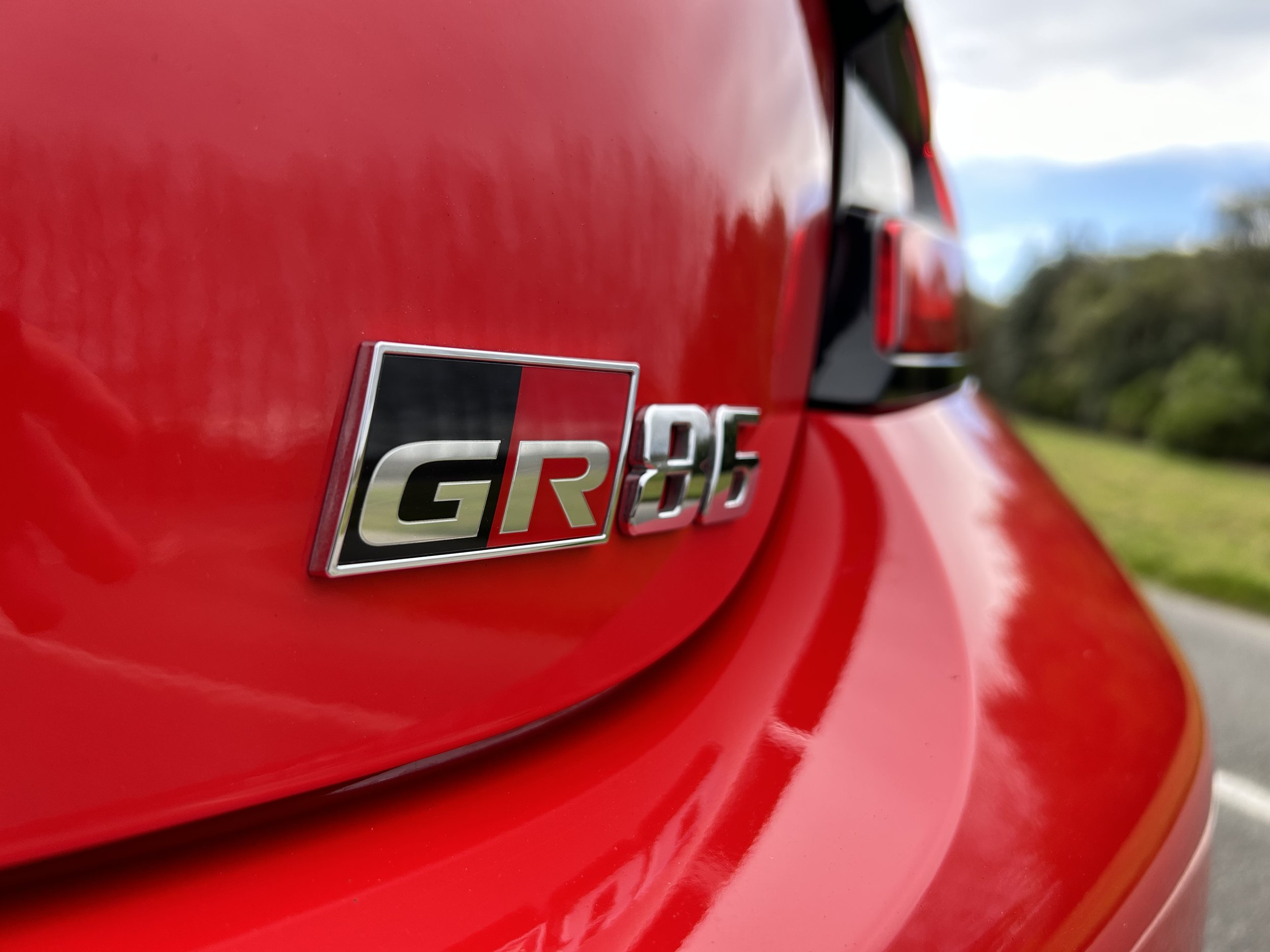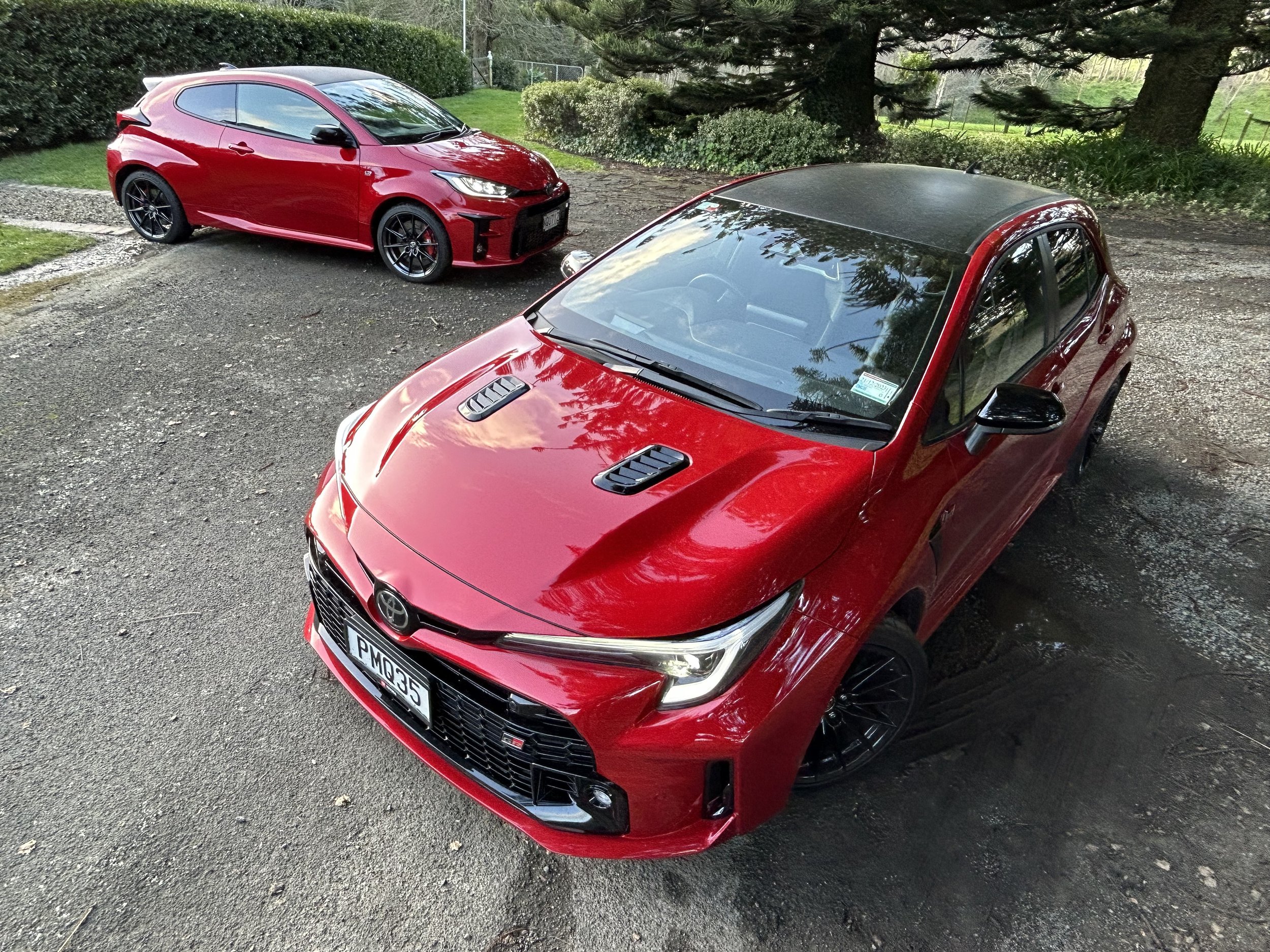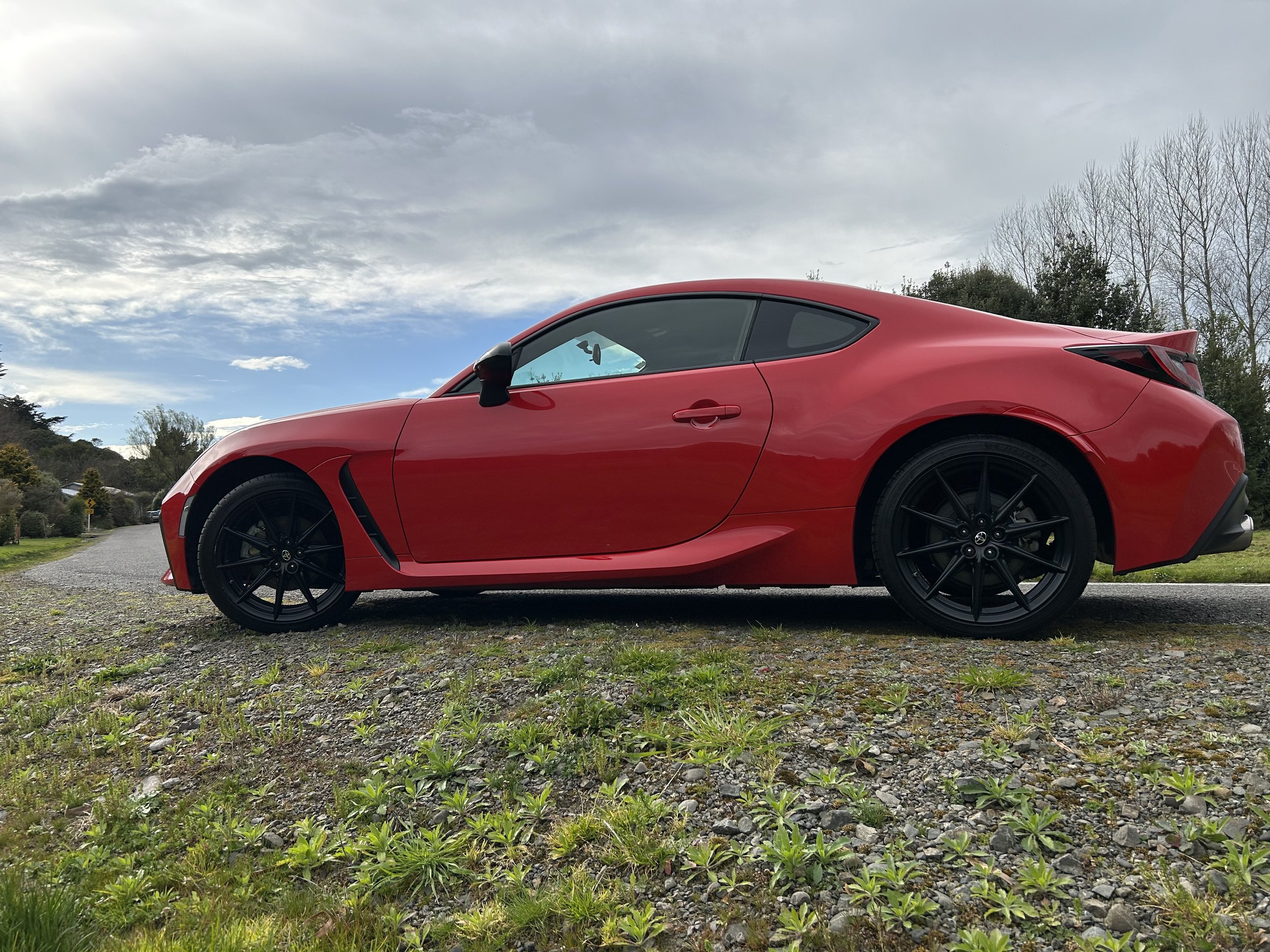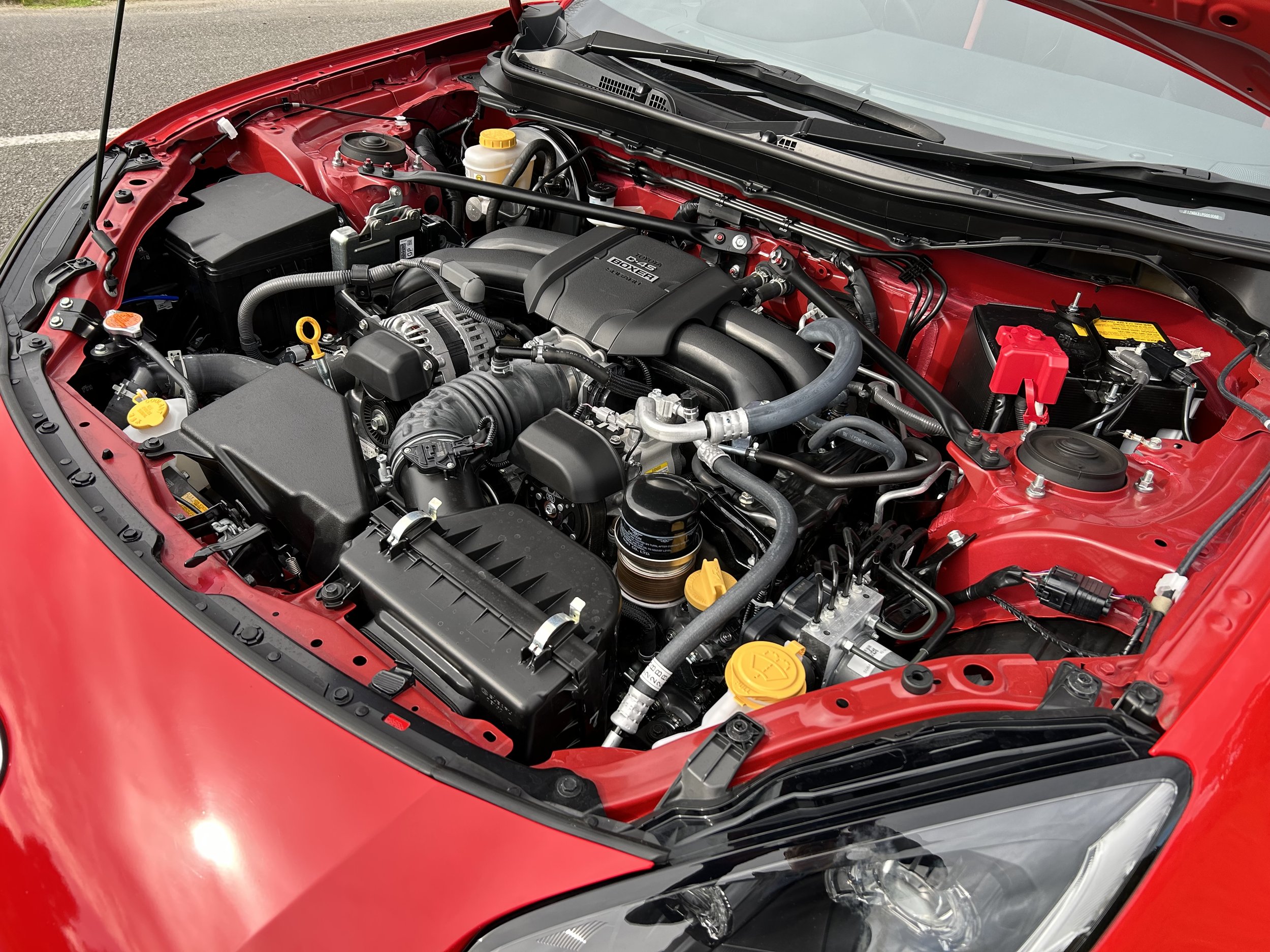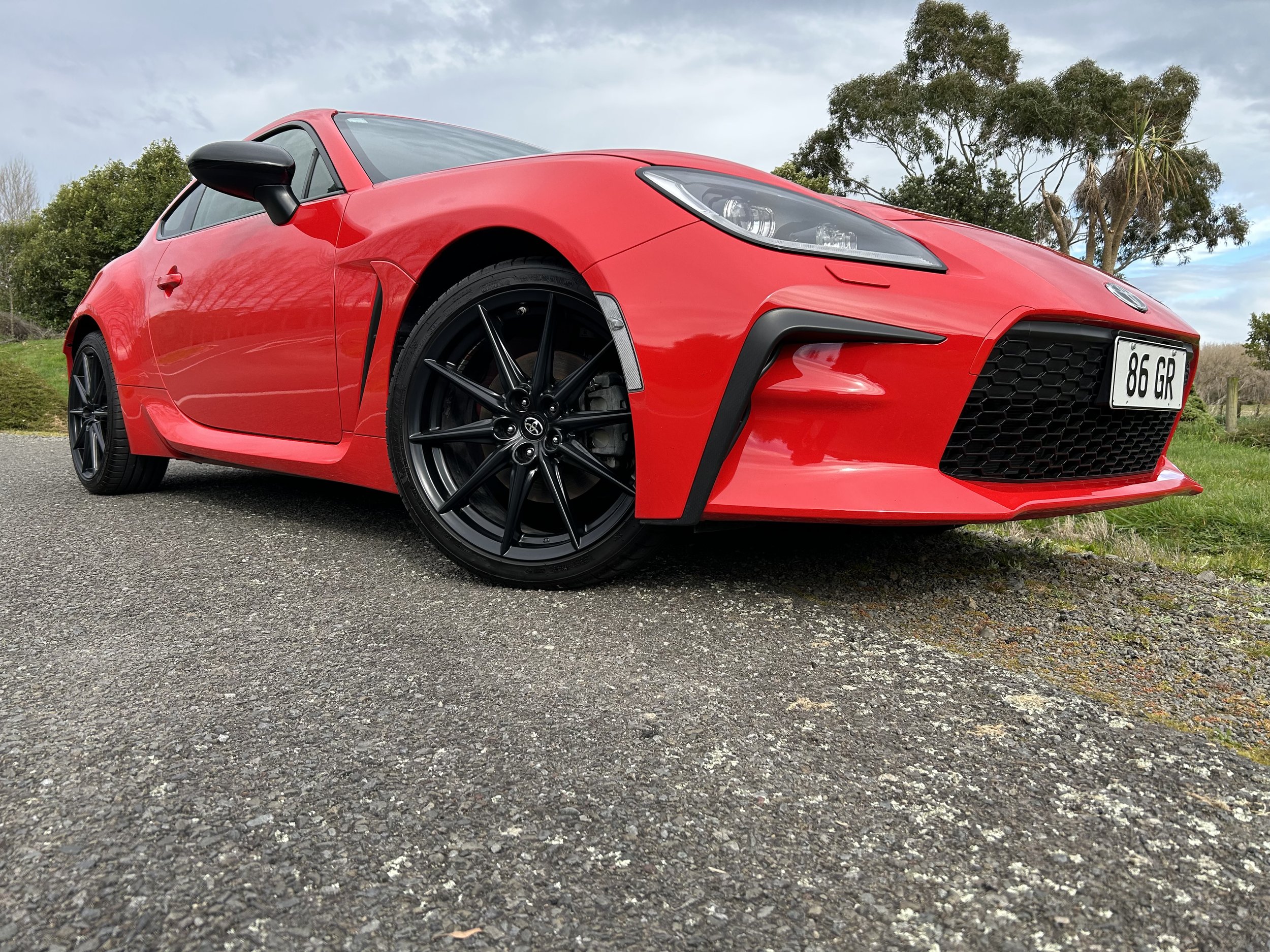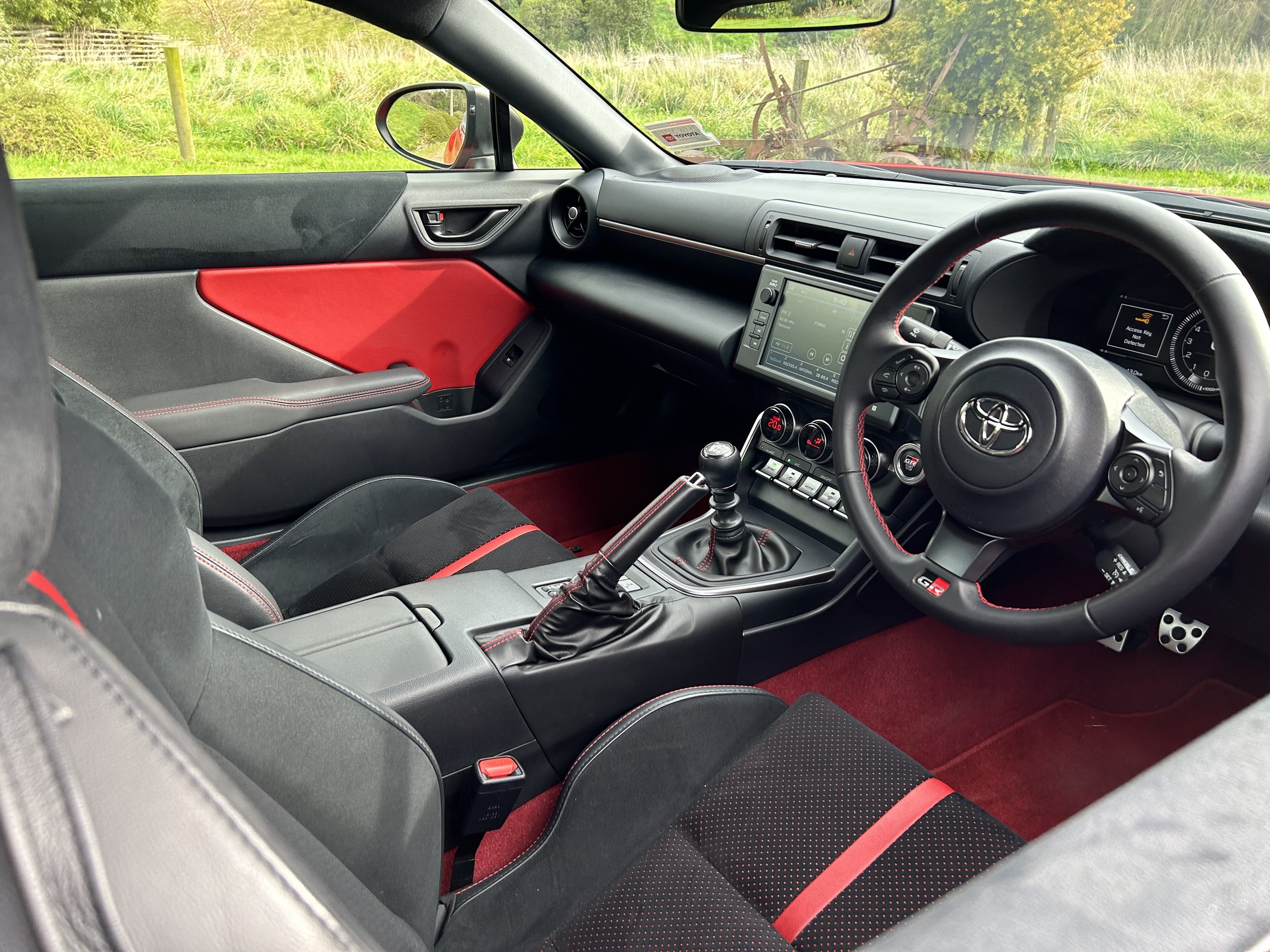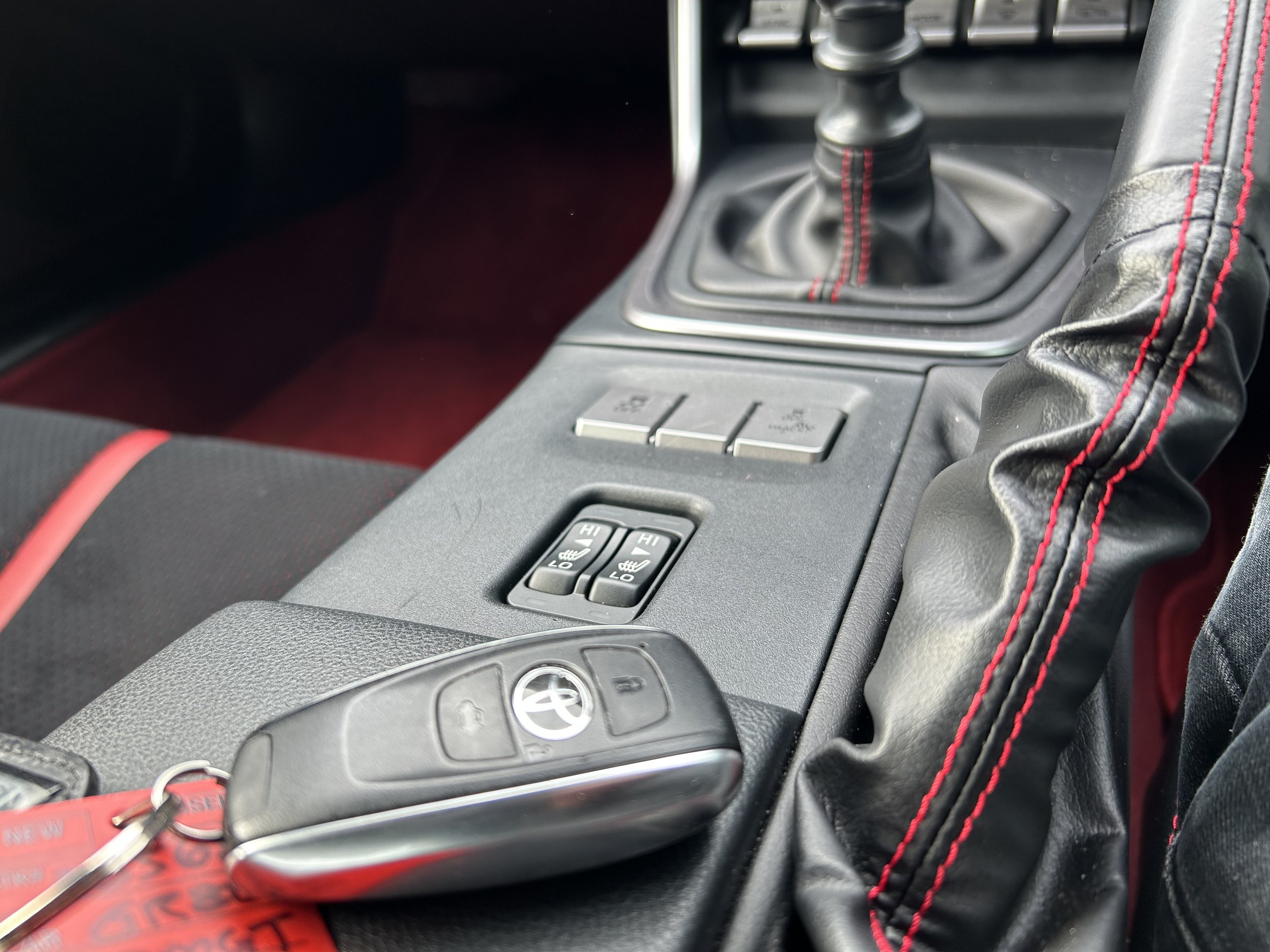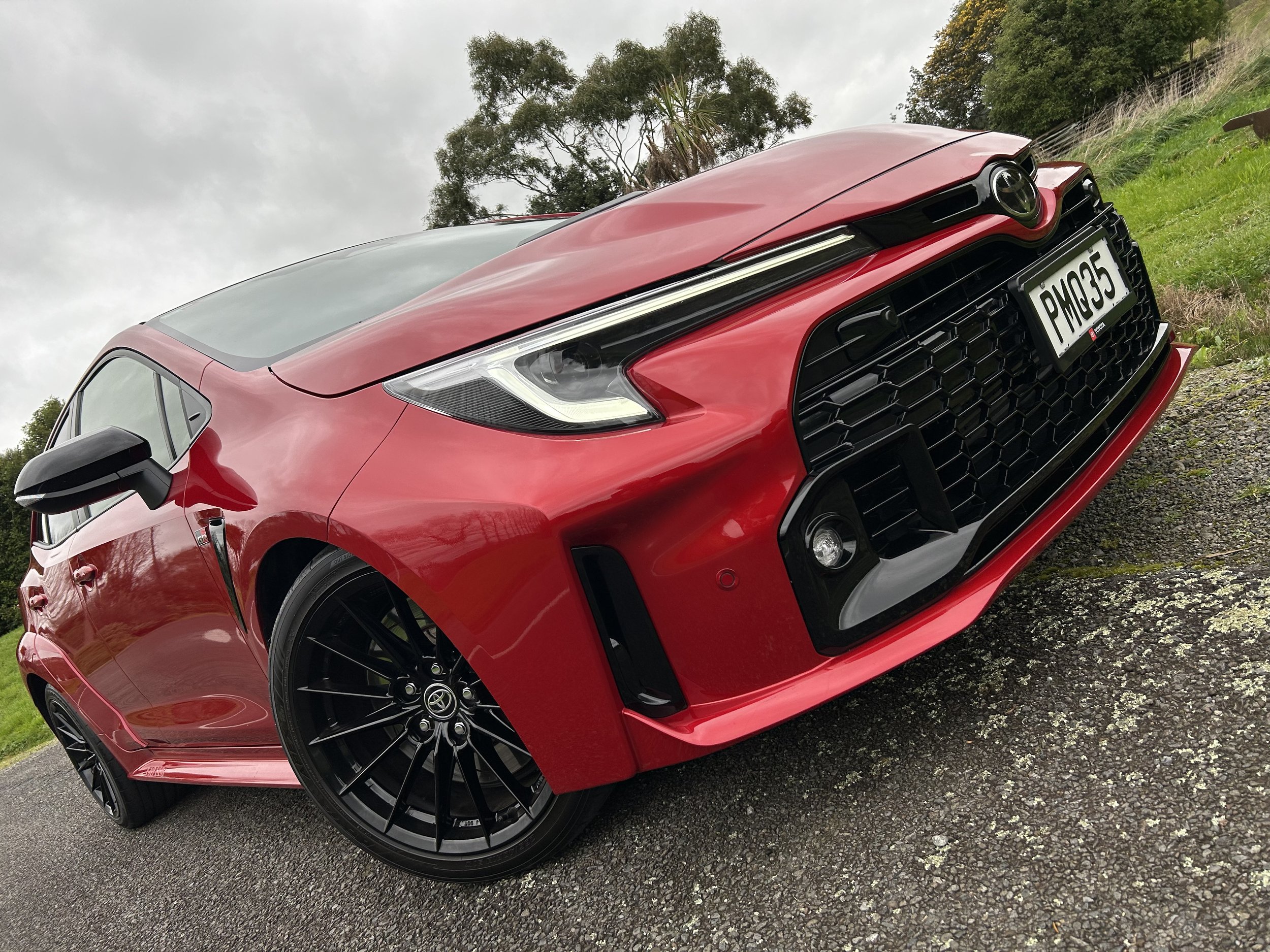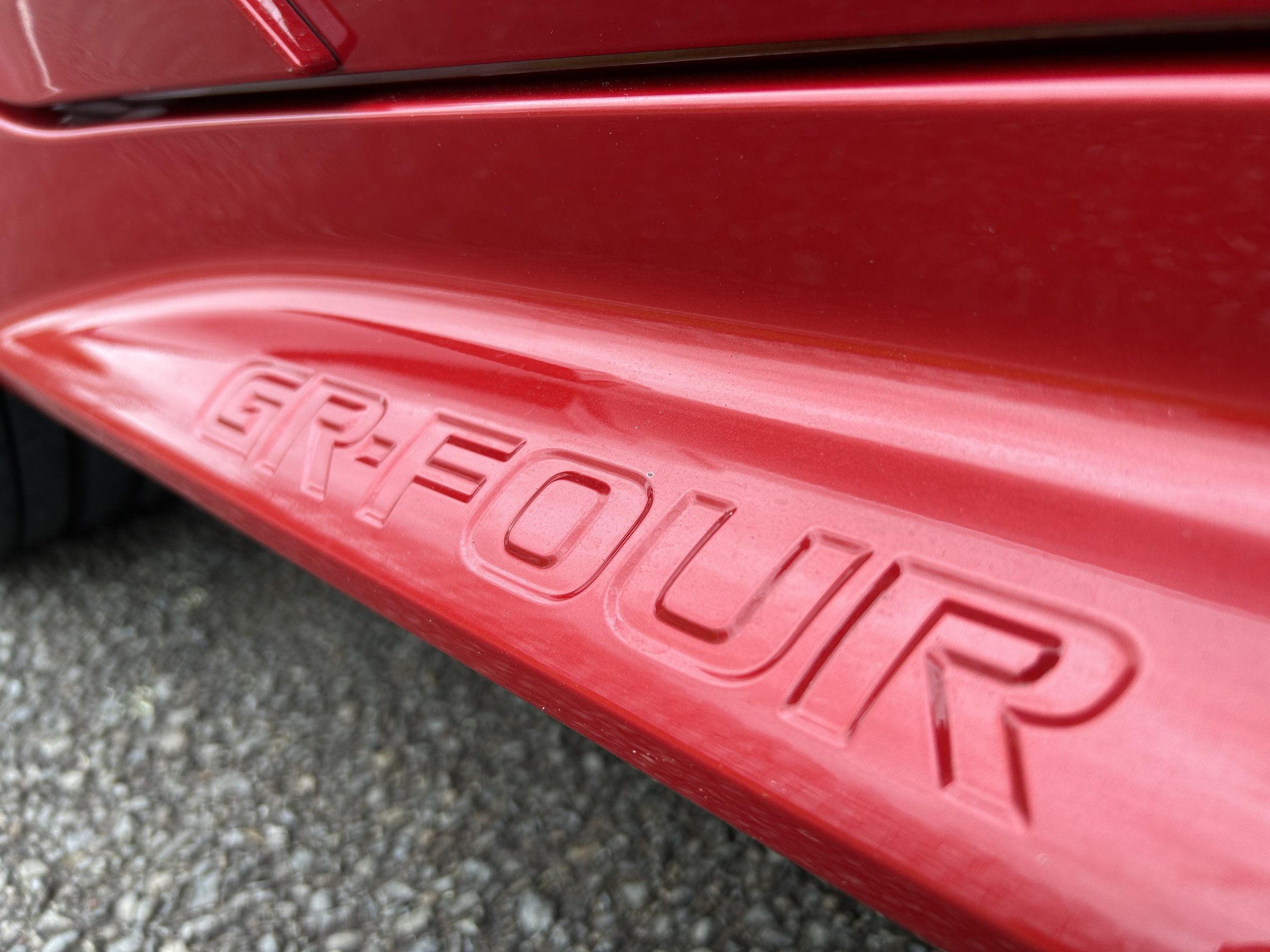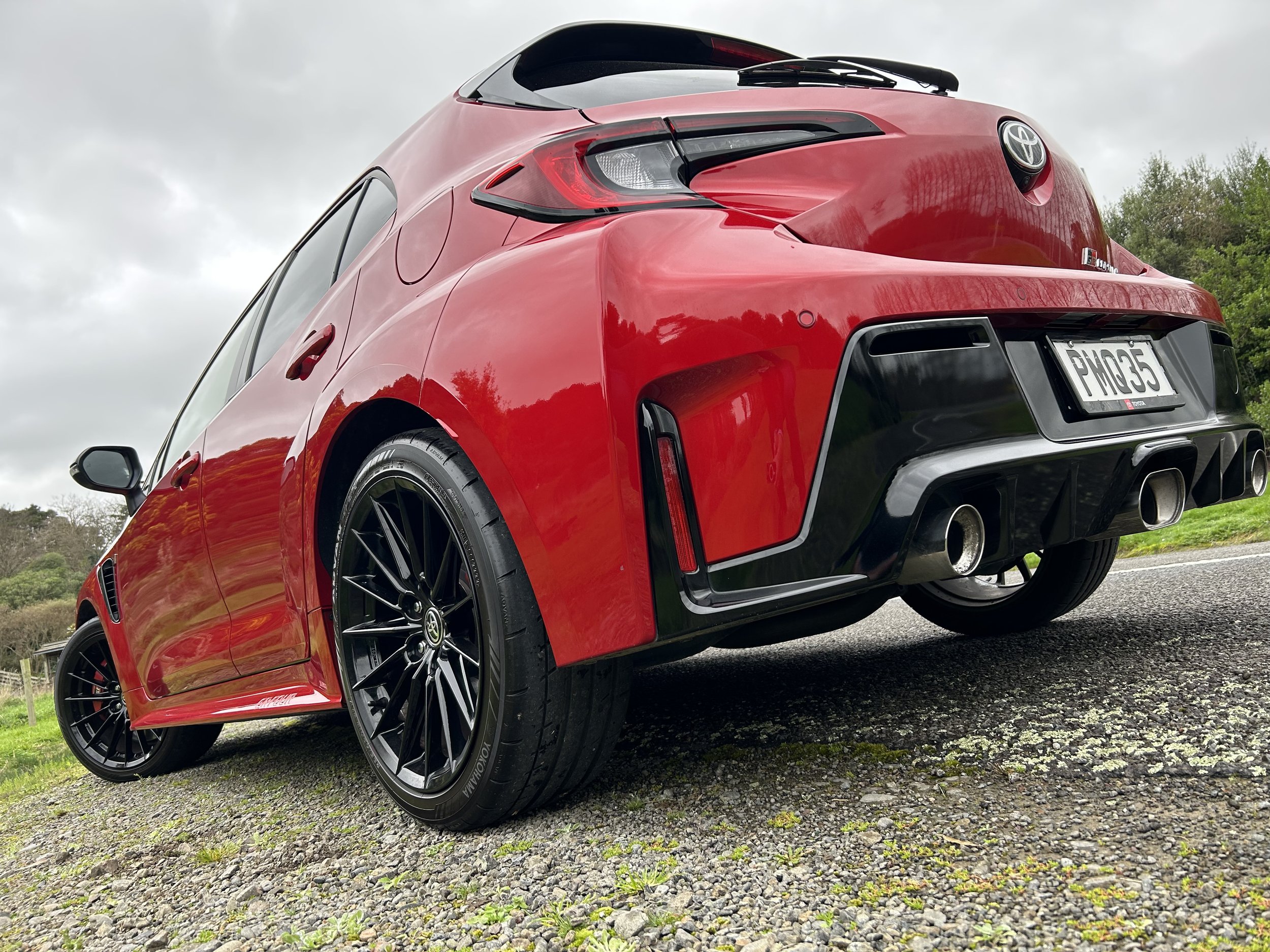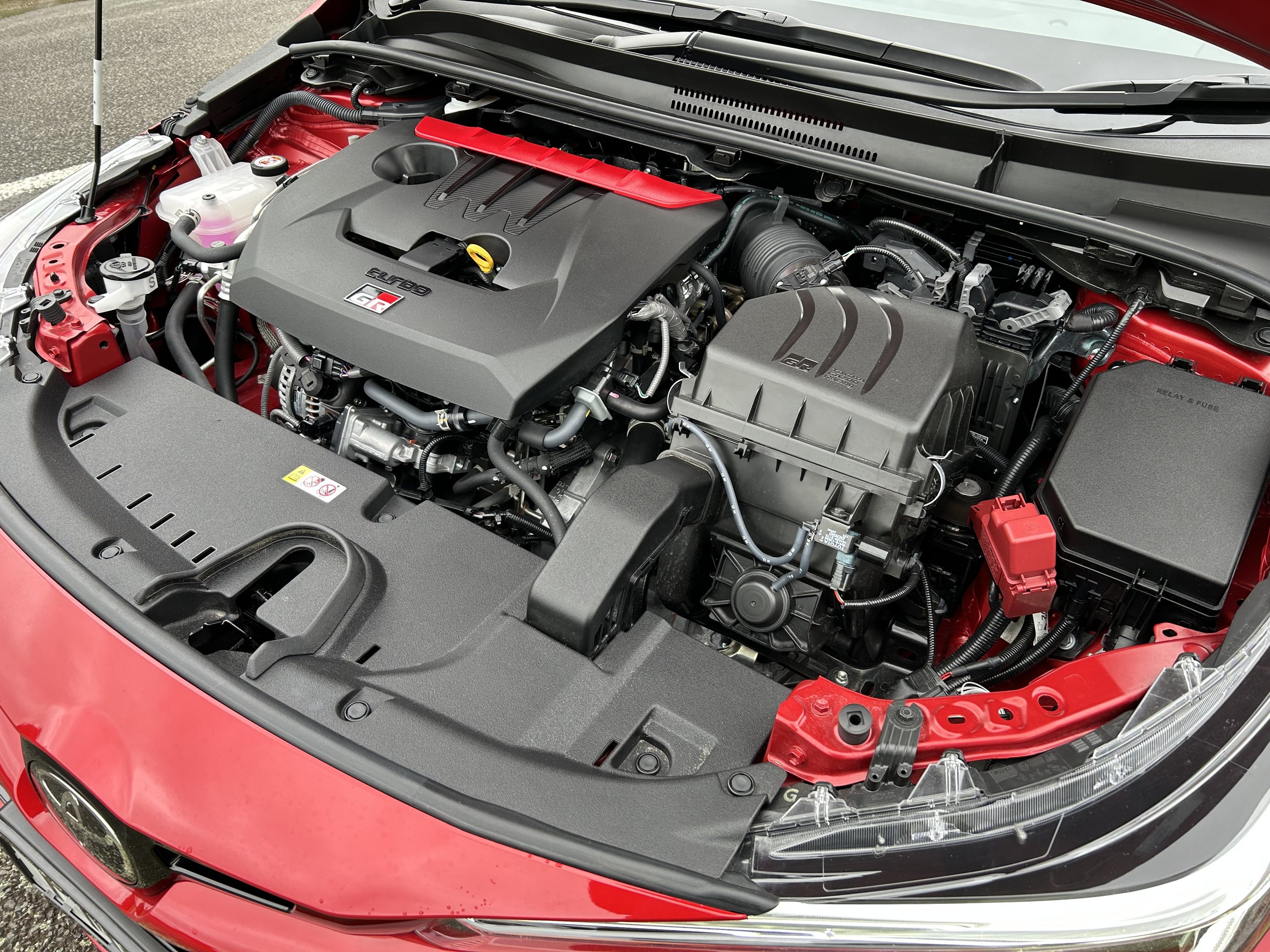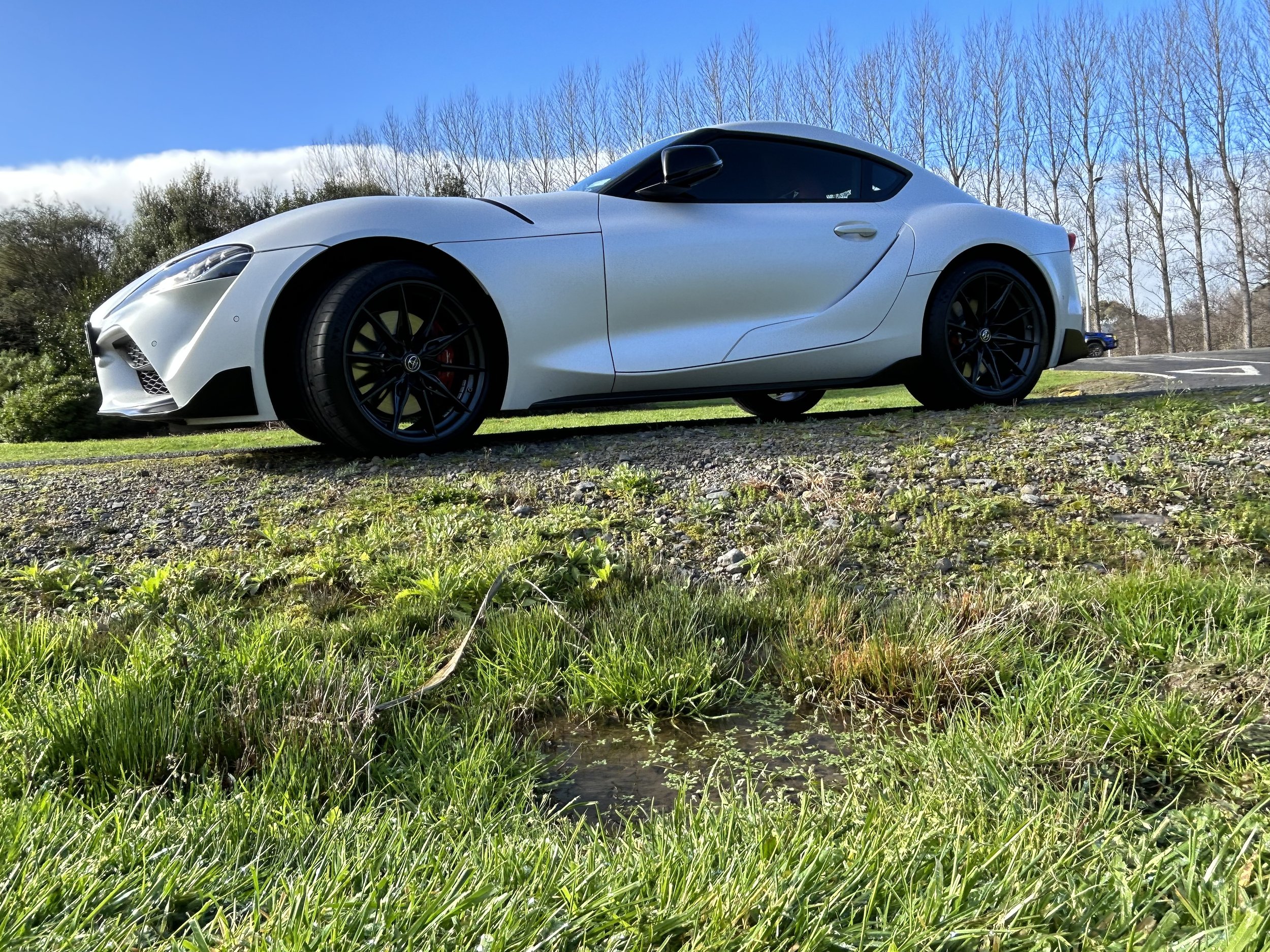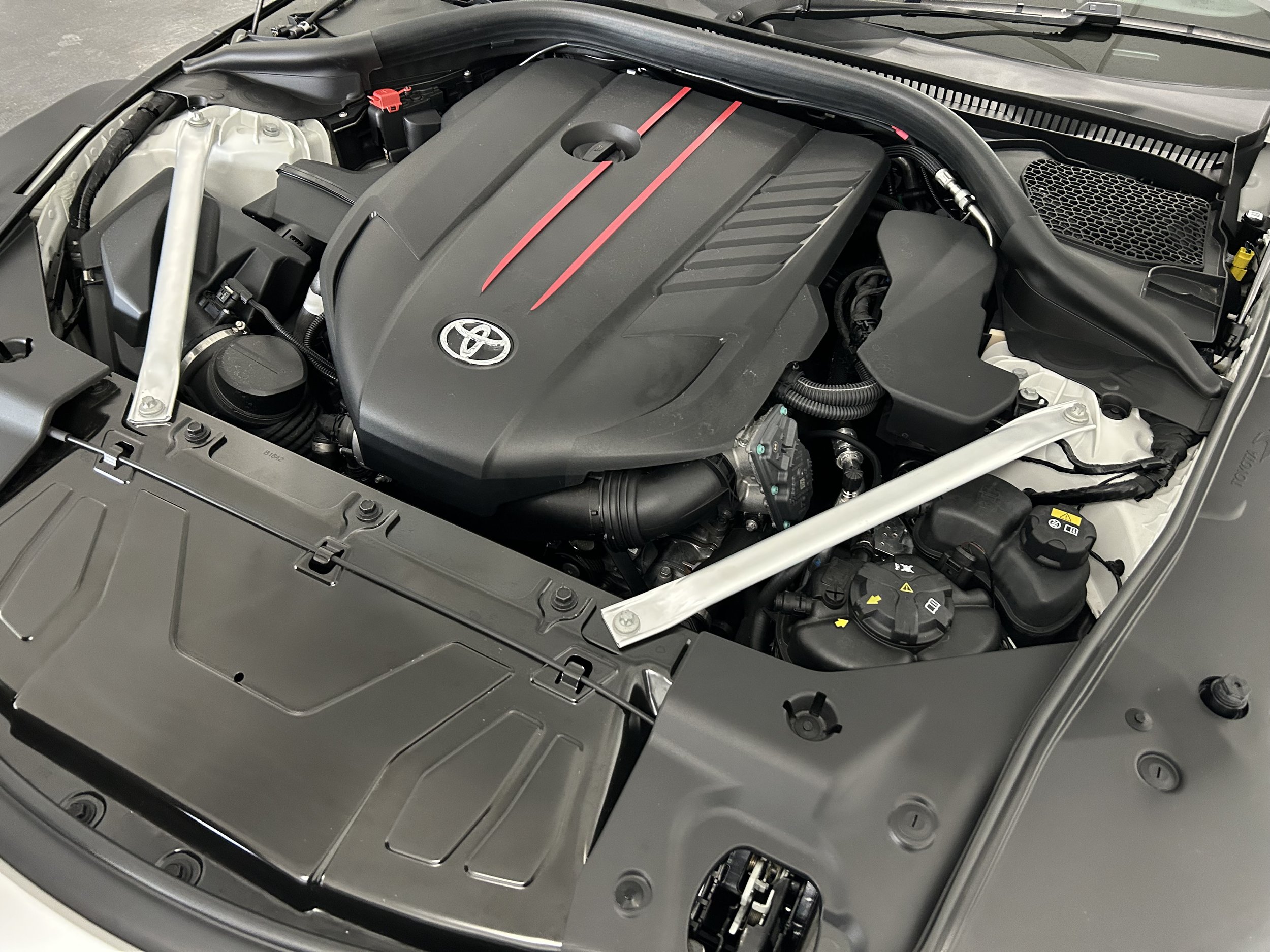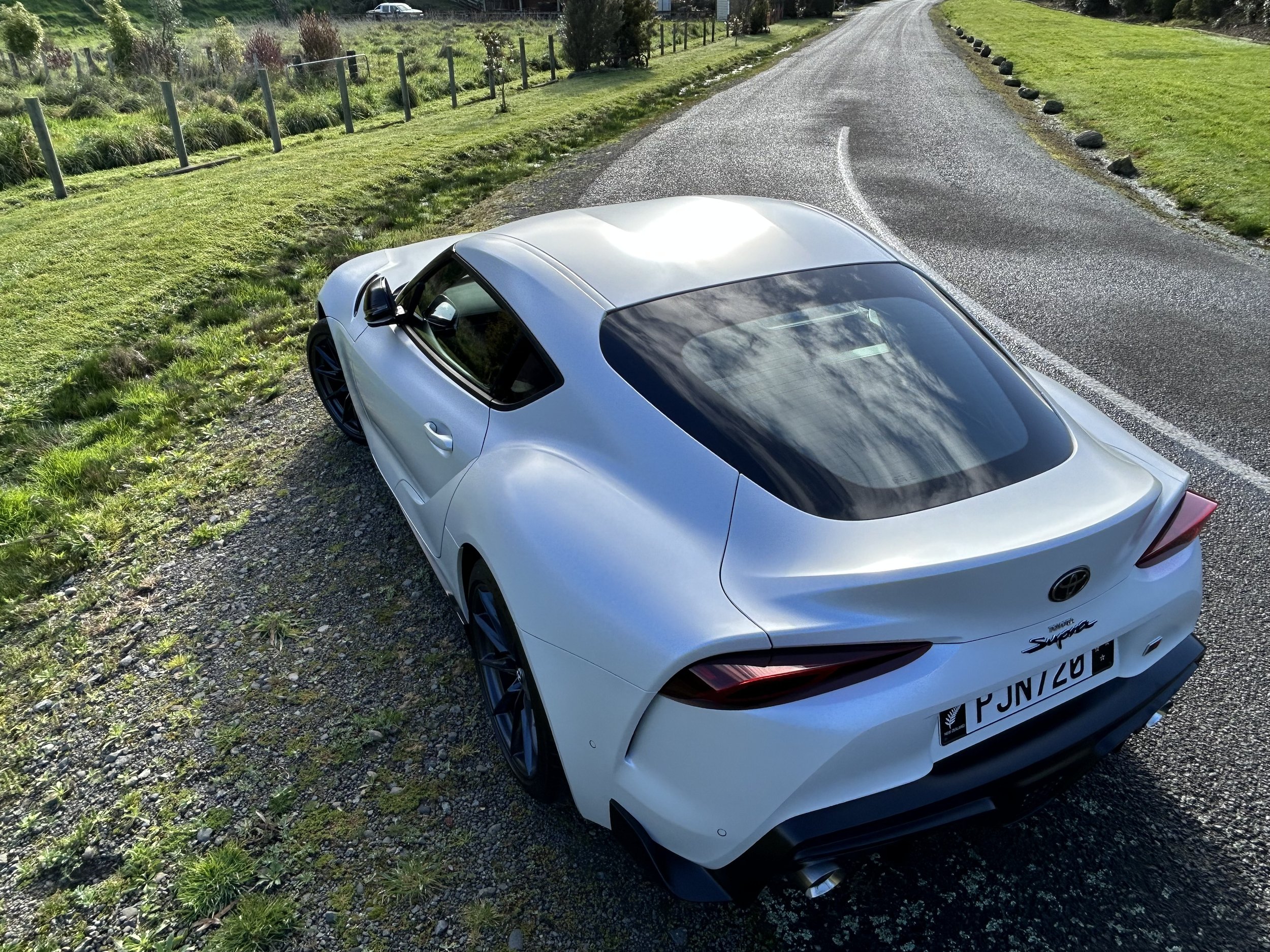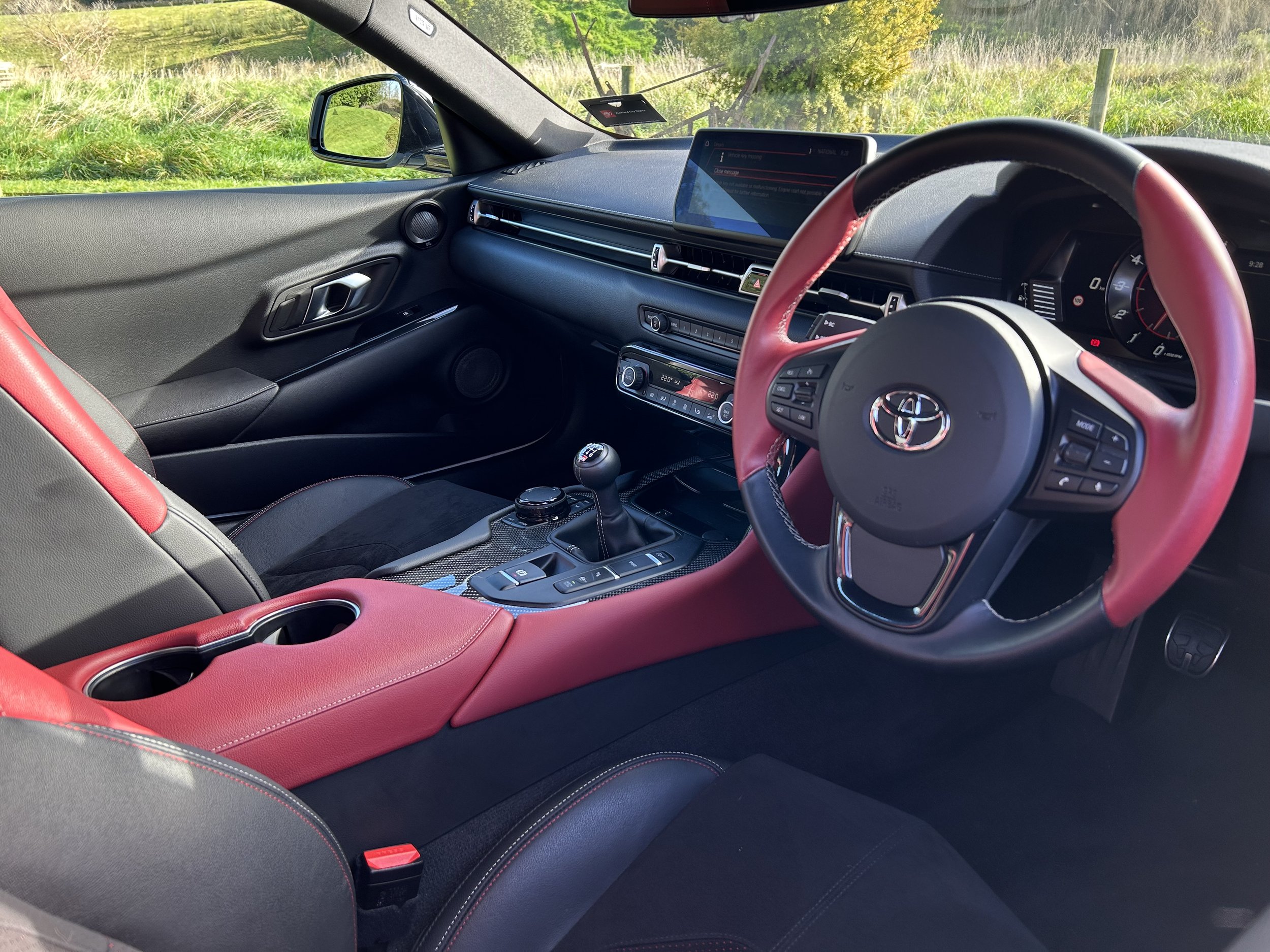Toyota GR 86, GR Corolla, GR Supra road test review: Gazoo's engagement ring
/Common badge, common spirit, common transmission type. Six-cylinder coupe or four, tri-pot hot hatch …. pick your flavour.
THREE fan-aimed pukka performance products behind the one badge, created for common purpose of nailing the affordable sports car brief.
Name the brand.
No need to Google. Just two candidates fit the bill, reducing to the single one here if when another pre-purchase requirement is added.
Direct shift, full automatic, constantly variable transmissions?
You’ve no time for any of those. If your left leg isn’t flexing, it isn’t coming home. Old-school manual only, matey.
With that requirement, it’s sayonara Hyundai, which gets it ‘right’ with the i20 and i30 N hot hatches, but comes up short in only offering the Kona N in DSG. Good for some. Not good enough for you. And, anyway, that sizzler compact SUV is now heading off sale.
Welcome, then, to the world as seen through the eyes of Gazoo Racing, the motorsport division of Toyota, whose initially sideline business - applying sports technologies from the track into Toyota production cars - has become a nice, not-so-little earner.
Latest from off the production line are the GR 86, Corolla GR and a new version of Supra GR. All astounding creations, each a joy to drive, none quite like the other.
Exquisitely engineered with little obvious containment of cost or effort; these are cars for which ‘near enough' was never going to be good enough.
Sure, they’re above mainstream; even potentially above ‘daily’. That’s the price for buying into this badge. With GR is about winning in world-level motorsport, primarily WRC and WEC, there’s no surprise these road cars have an air of race-track relevance; there’s definitely a purity to how they rock. If you’re not an enthusiast, if you don’t ‘get’ the credo, you’re not worthy.
Buying special means more than just the precision mechanicals; with GR, badge credibility is enhanced by rarity.
Toyota New Zealand does not seem to have wavered to restrict the Corolla count to just 150 units. Reality is the 86 population could be much smaller, as with it predecessor, the best place to see the latest car in multiple representation will be the race circuit, with talk that Toyota New Zealand has signed off this newbie for the same one-make series role in which the old car has excelled.
Supra? The car that introduced the GR credo and is thus the longest-lived is nonetheless the rarest of these birds; registrations data shows the automatic that’s been with us three years now is a true takahe. With official estimate putting the take-up ratio at no better than 10 percent, chances are the manual on test could perhaps turn out to be one of a dozen ever registered here. If that becomes the case, will this one day be the most collectible GR of all?
Collecting the full set might not seem outlandish, either, given another element of what makes the recipe all the more special is that commonality of character only goes so far.
GR is a wholly Japanese concoct, but that just one - the Corolla - could be fully considered a Toyota home-built reminds that this is a broader effort, requiring partners whose influence goes well beyond the coupes each having those extramurally-involved brands’ own key fobs.
This 86, like the last, in built and largely engineered by an outfit into which Japan’s No.1 has 30 percent shareholding. The drivetrain’s gravelly note, the transmission’s slightly rubbery feel, the interior trim choices … all speak to the Subaru-ness.
This Supra? The deal that led to it speaking with a German accent, to being the first of its kind with mixed heritage, relates to realities many just struggle to comprehend. But, without Toyota City having formed a friendship with Munich, with both then arranging a third-party assembly plan out of Austria, it simply would have stayed on the drawing board. The end result is a precision tool, packed with precision elements. Toyota paid the bills, but BMW still patently ordered the ingredients. It’s almost a Lexus, by another route.
Which means? Nothing bad. Think of how your absolutely favourite dish might turn out where it independently concocted and served up by three of the world’s best chefs. Certainty that each will bring their own twist will hardly make for a poorer outcome. That’s how it goes here.
GR 86
Price: $56,990.
Powertrain and economy: 2387cc horizontally-opposed four cylinder petrol, 174kW/250Nm; 10.6L/100km, 242g/km; six speed manual; rear-wheel drive.
Vital statistics: 4626mm long, 1310mm high, 1775mm wide, 2575mm wheelbase. Luggage space 237 litres. 18-inch alloy wheels.
We like: Stronger powertrain, sharpened driving feel, priced right against Mazda MX-5, has strongest motorsport credential.
Not so much: Hard to get, chintzy interior, driver’s seat could be better, most recalcitrant of trio when cold.
WHAT you’ll celebrate is that it has more. More power, for sure, but also more traction and grip, more driver feedback.
What you’ll also like is that is that has no less in respect to its straightforward simplicity. Even though it has gained weight, it’s still a car delivering a lightweight, back-to-basics ethos. The badge on the nose notwithstanding, what also maintains across the into second-generation is the ‘Subaru-ness’.
Fuji does things differently; most obviously of course in being the only Japanese make (only brand other Porsche) which stays with horizontally-opposed engine design. Boxers lend a distinctive feel to how the power and torque release.
Whereas the Corolla engine is all high-intensity, and the Supra’s is attuned for tidal wave oomph, the 86’s has an altogether different elasticity to it; lots of muscle down low, power waiting much higher revs to unfold, but a sense it still has to be worked to release the best it, though this time it definitely has more to give.
Dextrous and decisive gear work is demanded and, with that, also you learn about need for sensitivity with the clutch, throttle balance. At cold, this powertrain is still a taciturn grump, to point where a clean first-second is a challenge for even the best. When warmed, it improves markedly, but there’s still need for understanding that the most satisfying cog transitions demand a particularly footwork ballet; almost all the clutch is released as the stick shifts, dab then bury the throttle. So satisfying when you get it right. A bit annoying when you don’t.
All this with an exhaust and engine note that, while no longer anything burbly as it was was in the WRC heyday, is nonetheless still maintains a tone unique to the type; gravelly in the main, but with emergent baritone and interspersed with occasional small chirps of whistle. From a naturally-aspirated engine?!?
Other traits? Eyeing and knuckling the interior trim; you could argue that one reason why this is the least expensive GR is because the builder uses more more budget-priced plastics more prolifically and obviously. I personally don’t hold that against them; as a former Outback and Forester owner, I know how robust and rattle-resistant Subaru interior are.
All the same, when you slip into this car’s cabin, you need not be told that the alliance partner that did the bulk of the work on the old is still very heavily involved in the new (even though they don’t sell their BRZ version here).
So, everything’s an evolution? Pretty much. Anyone used to the old car will understand everything so said about the new. Basically, if you’re coming from a GT and into the GR, then it’s such a straightforward transition a blindfold could be involved.
Myself? Couldn’t be happier. Sure, the previous car was challenged, and could challenge, frustrating for not having quite enough oomph, but overall a fantastic pitch all in all.
Put old with new and the bonnet is just as long, the rear end just as stubby, the driver remains positioned low down, pretty much halfway between the front and rear wheels. Everything designed to keep all the weight as low down in the bodywork as possible, in a bid to maximise cornering performance, and to enable a perfect front-rear balance.
But there are noticeable differences. The latest is smoother in its shaping, wider and more assertive in stance. The front end has more inlets and vents, to allow extra air to cool the larger and more powerful 2.4-litre engine, which is essentially an evolution of the old 2.0-litre. Impression of it being more hunkered is no illusion. The body sits 10mm closer to the road.
The interior’s atmosphere is same-same different. Now there’s a touchscreen infotainment system and a digital instrument cluster; the first has graphics that already look dated and the other seems to have even left to a gamer to design. But both are functional and that’s all that matters. As before, the seats look better than they are. A tall person wishing for more lower back support will wish for the remedy of an adjuster, arriving with the others.
The cabin is tight, of course, and the back seats are still so vestigial you wonder why it just down’t go the way of the Supra, and become a pure two-seater. Speaking of Supra, though, the GR 86 is likely to be found to be roomier. There’s certainly more headroom in the smaller coupe. And it’s easier for full-sized adults to enter and egress. Advocates of wither car will argue long and hard about which offers the best driving position. Both fundamentally nail it, moreso than the Corolla.
Maybe the logic for the basic plastics and lightweight switches was the same that resulted in many WRXs of old being much the same; when potential for the car to be stripped for racing is so obvious, why go overboard? Take note the boot, though tiny, is shaped to take a spare set of tyres. Should the car happen to attend track The ‘lite’ approach might also explain why, though it has a good a rear-view camera, a handle blind spot detector and some parking sensors, there’s no active cruise, no lane keeping or AEB either. Is that cost or weight-saving or too much technology challenge? It’s the only Subaru product here without the Eyesight system.
Watching the kilos has been a definite thing. That this GR is 10kg lighter than a similarly equipped version of its predecessor is a heck of a feat, given all the unavoidable weight gain from platform strengthening. To offset using more high-tensile steel in the body to ensure the car is as rigid, and therefore as responsive, as possible, this second generation car achieves aluminium for the roof, bonnet and front wings and has a lightweight drive shaft.
Line of logic about this car having everyday usability is a slight stretch; it’s too firm, too awkward (not just getting out, but also opening those big doors) and maybe too noisy; the engine and road roar are ever-present. Perhaps Toyota decided purists wouldn't care about soundproofing. However, the other contention - that this is a vehicle designed to bring "excitement to the daily commute” - is on the button. If that daily drive includes, say, 20km of nicely-surfaced windy rural routes, it’s the best car in the world. So light, so nimble, so reactive.
So much like the old? Yes, but with two differences. First, there’s more oomph; just enough to satisfy the past criticism, but not enough to easily immolate light the tyres. As much as they accepted 86 needed more pep, engineers didn’t want to give this 86 TOO much, for fear it might them compete with the Supra. Hence why, though the capacity is up 400cc, it still doesn’t get a turbocharger (so why the whistle? Yup, it’s a mystery). But it’s still fast and punchier in the mid-range. The new 0-100kmh time of just over six seconds relates so much; the old did that in 7.6s.
The engine doesn’t sound impressive low down - the usual semi cement mixer growl - but press on. From around 5000rpm to the 7500rpm, it does gets genuinely junior Porsche rorty. Toyota is one of many to fit a system that pipes engine noise through the speakers, but the note is nonetheless has an authenticity to it.
Transmission type commonality bonds the cars and likewise cog-count, all being six-speeders, but from thereon each has a different action, weighting and feel. Corolla’s has the shortest throw and more precise engagement; Supra’s is beautiful, too, but cannot be rushed. 86? As said, it’s the one that demands a degree of dexterity, the working in particular of the clutch pedal, its pick-up point, and travel requires some learning; the throttle is also very sensitive. Get it just right - and you will - and it just adds to the overall impression of a car that wants to be driven hard.
Such a beautiful chassis, such impressive steering feel. And, finally, it gets decent tyres: I got why the old one ran Prius-spec tyres - the idea was it would feel fun at even low speed - but switching to these custom-made Michelin Pilot 4s is truly transformative. Like the old one, it loves to dance, only now it feels far more sure-footed, less prone to break out an unexpected move. You can have plenty of confidence in pitching into corners and using the throttle to control the direction. It’s very good fun. Where it doesn’t quite match the other GRs is in braking quality; the others are more reactive, less prone to over-biting.
You can feel the inherent rigidity of the structure, and the ride is stiff, but yet it is less jarring over the majority of bumps than the Corolla. There’s just enough suppleness; you can feel the car's weight moving around, but it’s not sloppy. Given the purity of its back-t-basics nature, it’ll be interesting to see how much set-up change is required to prepared this old-school sports coupe for racing. I’d say it’s intrinsically already on the right track.
GR Corolla
Price: $74,990
Powertrain and economy: 1618cc three cylinder, 221kW/370Nm; 9.4L/100km, 213g/km; six-speed manual transmission; four-wheel drive.
Vital statistics: 4410mm long, 1480mm high, 1850mm wide, 2640mm wheelbase. Luggage space 213 litres. 235/40 18-inch alloy wheels.
We like: That Toyota has a performance Corolla;
Not so much: Needs more exhaust snarl; seating position for tall better than in Yaris, but still not quite right.
HAVING clocked 50 years of existence, the big test for World Rally Championship will be what happens next.
As things stand, the three mainstays of the current competition - Hyundai, M-Sport/Ford and Toyota have pledged to see out the current Rally1 era. But that conceivably wraps up after next year, after which new hybrid drivetrain rules introduce. Except they might not, because while involvers are reasonably keen, the sport’s administration seems to be getting cold feet about elevating the electric involvement.
It’s hard to imagine world motorsport being without the ultimate international test over gravel, snow and asphalt. Rally drivers are a breed apart and out of all top-tier racing competitions, WRC is the one that has strongest record by far of delivering off-shoot road cars that lend, to varying degree, a flavour of what Ogier, Paddon, Neuville and so many other famous household names have experienced.
Given that it also looks every inch a rally refugee, the GR Corolla might leave impression it has directly resulted from that association.
The reality? Hmmm. Yes, Corolla has a modern era WRC heritage, but the highlight memory of Carlos Sainz seeing his chance of a third world title when his works car famously suffered an engine failure within sight of the finish of the final stage of the 1998 season is hardly something Toyota would care to celebrate.
Embarrassment was lost in the dust once the car that still flies the flag in WRC now landed. Yaris WRC has enjoyed enormous success, and though the GR road doesn’t wholly link into the racer, it’s got the right stuff because of rallying.
GR Yaris today is the shrimp that stands tall; a four wheel-drive rocket ship that is one of the best of its kind. Ever. And, with all its good stuff - platform and everything attached, engine included - having transferred into the next size-up Corolla, Toyota has basically doubled the strength of its barmy army.
Which GR is better? Difference in wheelbase, physical size and weight are patent; gut feel is that Yaris is the edgiest, more energetic. But if so, it’s by a whisker. Out on the same winding route on which the original sold itself to me year and bit back, the Corolla felt equally adept and also hugely impressive. No less adept at making a mockery of corner speed advisories.
It would seem logical for Corolla to be the more planted and assured, given it has more space between the front and rear wheel sets and wider stance as well. It might also have a bit more top-end punch.
On the other hand, while the steering is beautifully weighted and there’s plenty of dynamic deftness, it’s possibly a bit less surgical. Yet you’re talking teensy difference. On pace and poise, it definitely has the goods to make many other hot hatches seem a bit less special.
Parking up alongside a GR Yaris - in the same pearlescent red - was a crazy moment; they’re different cars, but dressed closely alike. GR Yaris has a squarer stance, but both are fully belligerent. It’s interesting how the body shapes book-end much the same; Corolla’s flared rear guards also finish in a similar, 90-degree curve and the front bumper again has a large rectangular grille in gloss black with GR badging. Again there are three exhausts - the extra one helping ease back pressure. Corolla’s bonnet has functional vents as well as a power bulge. And at the rear, In a clear throwback to old Celicas, the side skirts feature the GR-Four logo.
Like Yaris, GR Corolla has an exposed forged carbon roof to reduce weight and lower the centre of gravity. Interestingly, the fake carbon wrap that is on Yaris is gone from Corolla, where the real carbon is exposed.
Even with best practice slimming, Corolla is still 231kgs heavier than Yaris, which clocks 1280kg. To offset, the factory has eked another 21kW from what was already the world’s most powerful three-cylinder engine, a feat that demanded revised pistons, stiffer valve springs, and a new turbo that creates more boost.
Yaris has the edge in the 0-100kmh sprint, but only by 0.1 seconds, but I suspect it is also a bit quicker-witted in throttle response beyond that point, simply because Corolla has more mass to move.
Creating speed is one thing, carrying it another. Body strength is important to that. With many more weld points and prolific use of structural adhesive, this Corolla has the stiffest shell of any; requisite to ensure best result from its really trick suspension - not just the usual upgraded springs, dampers, and stabiliser bars but also a double-wishbone rear. And it’s the only Corolla with a permanent all-wheel drive system with front and rear Torsen limited slip differentials.
The finishing touches are big brakes - four-pot aluminium monoblocks (in bright red with GR logos) and a two-piece slotted 356mm ventilated disc up front, twin-pot aluminium monoblocks also with a slotted ventilated disc at the back - and lightweight Enkei alloy wheels fitted with Yokohama Advan Apex rubber. Potentially, the penalty for taking a semi-slick style performance tyre will be felt on owner’s pockets. NZ road surfaces are abrasive, not least coarse chip. The tester’s set looked suspiciously fresh.
Owner engagement asks for initial mechanical sensitivity. From cold start, you see a dashboard message reminding to go easy until the temps are right. During my test time, that could ask up to five minutes.
Being a larger car, Corolla is in theory a more practical choice, but there are two considerations if that’s of importance.
First, it’s never been the most commodious car in its category - boot space capacity has always been an issue. Here at 213 litres it’s 4L less than with the regular hatch; while there is no spare tyre the battery has been moved into this space to improve weight distribution. Corolla’s cabin space has also been quite cosy. Moreso here, with the sports chairs gobbling extra centimetres.
Second? When driven with enthusiasm, it is somewhat of an anti-passenger machine anyway. If you’re out to share something of a ‘GR at extremis’ experience, the rear-drive coupes are the better choices, simply because they have more ‘natural’ transition in cornering, under brakes and on throttle. With the AWD platform, everything tends toward abruptness. That’s just rally-style.
Drivers will find it hard to resist pressing on. The transmission is such a precision device; the slickest, snickiest and most switch-like here. You wonder if top gear, sixth, is destined to grow cobwebs. On the roads I ran, with enthusiasm, everything was happening in second, third, and fourth. The pedal set feels entirely designed around heel-toe footwork (if you’re not so flash, the car features auto-blipping) so do yourself a favour and honour it with appropriate footwear.
Perhaps after an elementary (first stage?) stint, fiddling with the all-wheel drive controller. This adjusts the system’s bias. Normal 60:40 is great for everyday tootling, but start charging and it’s patent that the car, depending on the roadscape is sharper in either the Sport 30:70 or Track 50:50. If you prefer rear end movement to push, then Sport is the go, but even then don’t expect it to easily fall into any form of slide. Yaris has special ability to skid on command with trick handbrake set-up. Corolla doesn’t seem to have picked up that trick. Or maybe I wasn’t trying hard enough.
One criticism of Yaris heard from the tall is that the command chair cannot be lowered enough. Corolla is better there, with more adjustment, yet it’s still wasn’t quite right for my tall frame. The coupes are better.
The interior is not all out premium, but you get more soft-touch areas over the regular Corolla and its an improvement over the Yaris.
The seats and steering wheel being heated is a GR-specific metal, along with a push-button starter and GR carpet floor mats. The touch screen is easy to use but would look better if the display filled it right out The 12.3-inch display behind the wheel allows plenty of customisation, via buttons on the wheel. Volume and dual-zone climate control adjustment is via real buttons and dials, there’s decent storage too, but no centre armrest, possibly to keep your elbow free of obstructions when making gearshifts.
The one ingredient lacking is something often heard (pun intended) in reference to modern performance fare. A decent soundtrack. I wouldn’t expect a car like this to all full WRC - though having it tuned to emulate special stage start setting would be something - but there’s no real parp at all.
Measuring this model up against the VW Golf R would be fascinating; in isolation, Germany’s car is exceptionally complete. No less fast, no less fun, no less tech, not least with the performance pack, and such a scintillating soundtrack. That’s the wolf at Toyota’s door and it’s hungry for blood.
GR Supra
Price: $96.990.
Powertrain and economy: 2998cc in-line six cylinder, 285kW/500Nm; 9.9L/100km, 225g/km; six speed manual transmission; rear-wheel drive.
Vital statistics: 4379mm long, 1292mm high, 1865mm wide, 2469mm wheelbase. Luggage space 290 litres. 19-inch alloy wheels.
We like: Manual raises entertainment value and reveals true qualities of this engine and chassis.
Not so much: Fuel consumption, iDrive quirks, tight headroom for tall, awkward reverse.
RARITY value is often crucial to determining how well a car weathers depreciation.
The GR Supra manual stands to do well on that count. Registrations data suggests Supra in its initial automatic form is the lowest volume Gazoo Racing product. Statistics suggest that, in most sports models, manuals command a one in 10 hit at best.
With that all on board, Supra with three pedals and a stick shift stands to be far more exotic sight indeed. Will it be more covetable in the the future, long after production has ceased?
How the future unrolls is far from certain; by then we might not even have a fuel to fill the tank. In the now, there’s no argument about its value. If you want a Supra that delivers optimal fun and a true driving feel, and don’t have issue working your left arm and leg, then this is the one.
Sure, it asks for more involvement. But as much as you give, it returns in even greater quantity. There’s more personality. It’s more of driver fascination.
As much as few might actually buy in, it’s the gearbox Toyota says fans were calling out for. When Supra launched back in 2019, the word was no manual was being considered. Turns out that was a bit of a fib. Development had already started. They just didn’t want to talk about.
In hindsight, it’s likely that reluctance came about because marrying that type of transmission to this six-cylinder was not that easy. While engine supplier BMW used to make manual sixes, that all wrapped up before the deal to create a Supra from the Z4 was inked. They nothing to offer for this car’s turbocharged B58 unit.
Japan’s No.1 was undeterred. The story goes that it developed a gearbox especially for the job, from components that transmission supplier ZF had on the shelf but had never combined for anything else. But that programme took time to perfect – hence why it had to follow the auto to market.
It’s not been a case of simply bunging in a new box. Sure, from the outside, there's little to distinguish the manual Supra from the auto; the wheel styling is has is new, but shared with the auto as well.
Toyota had to revise the traction control system to deal with the new driveline. They divested active cruise control. Changes to the steering, brakes and suspension that also come to the auto only arrived as result of being requisite for the manual.
Within the cockpit, you’ll see the centre console had to be redesigned; the original layout create was deemed problematic because there was high chance the driver's hand would bash the climate control system whenever first, third or fifth was selected. Actually, there’s chance of doing that if you’re one to grip the stick, rather than cup it.
The control wheel for the infotainment system has been relocated, the electronic parking brake and drive mode buttons slightly repositioned. There was room in the footwell for a third pedal, but the centre console is now a bit wider. That affects the passenger rather than the driver; those in the left risk bashing their right knee against a weird little ledge that wasn’t there previously.
Many of the controls will remain familiar to those who've driven the auto, but not necessarily any modern Toyota, on account that the steering wheel, instrument cluster, infotainment screen, air-conditioning controls and other switches are BMW. You cannot call it a sell-out for that, but it does flavour the car. One the one hand, you’ll admire the quality, on the other, it’s a Toyota in which you the indicator wand sites on the left side of the steering column and demands an understanding of BMW iDrive.
Supra's cabin feels properly sporty, though. The seats aren’t as good as they look; the rigid headrest asks the tall to sit a touch awkwardly - it’s a small irk that compromises an otherwise superb driving position. A bigger issue might be the tight headroom for anyone of above average height. If you went to a track day and had to wear a helmet, it could get tricky. Getting in and out with some semblance of dignity seems to be a challenge for anyone. Take your time, place your feet carefully.
Cabin storage is also a touch minimalistic; but the area behind the seats offers enough stowage potentials for luggage, providing you favour nothing larger than a medium bags or two, preferably soft-sided. The boot proper only holds 290 litres.
But it’s a sports car and, as such, it’s all about the driving. And not just any driving … we’re talking hands on, high sensory stuff. The kind that asks for commitment. Talent.
That’s the very much the theme here. Supra has always been expectant of driver involvement; it comes with a high degree of competency: A great engine, good chassis, reliable brakes, sweet steering, good tyres: 255/35 R19 Michelin Pilot Super Sports. But determining how far the automatic edition could ultimately be pushed was challenging - I found as much when driving one on the Targa tour several years ago. It was certainly fast enough, and held well through corners, but I never really felt entirely at one with it.
The manual provides that bridge. The whole proposal is to make the driver feel like an organic element and, by and large, it does just that.
The auto has paddles, but even so, they’re not allowing 100 percent hands-on; it’ll ultimately auto shift up or down if it senses absolutely necessity to. With the manual, those decisions are yours alone to get right … or wrong.
It proves that this engine has more to give than the auto allows; you find there’s significant urge up in the high zone, beyond the point where the auto might shift up, you can hold it whatever your chose for the moment in situations where the auto either reacts poorly or is utterly indecisive.
Best of all, when you work the manual hard, the engine sounds brilliant; there’s no drone, just a lot more howl. Bring it on. Best results come in best roads; on the country thoroughfares I selected, it was consistently more exciting, interesting and involving. As much as it comes across as being more feral that the auto, Toyota’s stopwatch reckons the auto is the quicker car in the 0-100kmh. Albeit by 0.2 seconds, 4.1 seconds versus 4.3.
Old school only goes so far in this age. Technology hasn’t entirely abandoned. This is an ”intelligent" manual. The on-board computer matches the engine revs to the road speed for you, allowing for smoother transitions between each ratio. There’s a throttle blip system, too. It can be bypassed, if need be, but why would you?
The traction control system’s rework isn’t to inhibit wheelspin but control it dependent on circumstances. It acts as a friend when you’re departing junctions, but increases the amount allowed on ascents. Toyota imagines this car chasing apexes on tight hairpin bends. Too much? Again, you can switch it off.
Tweaks to the suspension and steering are just that; modest refinements. Some would say Supra is more a big grand tourer than an outright sports car; I’d say that it’s a much nicer, sharper drive than the new Nissan Z. Yes, the car is obviously carrying weight, but there’s a little bit of body roll, but plenty of grip and it corners sweetly. Dial the traction control back and it will become feral enough for you to be aware of requirement to up your concentration and reactions.
The faster you go, the harder it drinks. That’s part and parcel with the genre, but all the same the manual is going to be more expensive to feed, cos it’s hungrier. At 100kmh cruise, it’s pulling 1600rpm in top gear - that’s 400rpm higher than the auto. The impact of that is higher consumption - 9.9 litres per 100km here, against 8.3L/100m in auto - and higher CO2 output, which attracts a heftier Clean Car fee.
You’d take that on the chin and look on the bright side - which is basically that you could have the three current GR cars in a garage, as an instant collection, for about the same sought to buy one decent European performance exotic.


